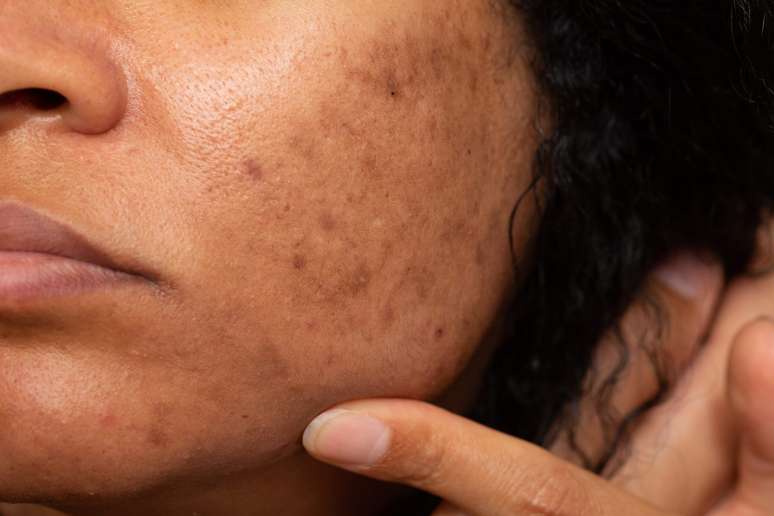In addition to some factors among the main causes of melasma, food also exerts a significant influence
Food can reduce the problem, but some foods of the season can worsen stains
During the winter, many people use dermatological treatments to control melasma – a condition characterized by dark spots, especially on the face. But what few people know is that some typical foods of the cold season can aggravate the picture, while others can help to soften the brands.
Celebrity with melasma
Famous like Claudia Raia, Kelly Key and Preta Gil have publicly revealed the fight against melasma. Although hormonal factors, sun exposure and genetic predisposition are among the main causes, food also has a significant influence.
“Some foods increase the production of free radicals and favor inflammatory processes that can intensify melasma, even in winter, when the sun seems milder,” warns nutritionist Vanessa Costa.
Foods that worsen melasma in winter
According to the expert, excessive consumption of hot drinks with refined sugar, such as hot chocolate, sweetened coffee and caloric dessert typical of the season – fucks, fonds, cakes – can be a risk factor.
“Sugar stimulates insulin peaks and chronic inflammatory processes. This can increase hyperpigmentation in those who already tend to melasma,” explains Vanessa.
The nourologist Bruna Manes adds that alcohol is also a silent villain. “Red wine, which is usually more consumed in winter, can contribute to vascular and inflammatory changes that favor the darkening of the stains.”
In addition, even foods rich in saturated fats, such as yellow cheese, sausages and transformed meats, should be consumed in moderation. “They include skin metabolism and make cell renewal difficult,” says Bruna.
What to eat to help lighten the stains
The good news is that food can also be an ally in control of melasma. The fruits rich in vitamin C, such as Acerola, Strawberry, Orange and Kiwi, help fight free radicals and have an indirect bleaching effect. “Antioxidant foods are fundamental. Dark green vegetables, turmeric, olive oil and seeds such as flax seeds and chia should be present in the diet”, recommends Vanessa Costa.
Another culminating point goes to selenium and zinc, minerals present in oil seeds and seafood, which help in the regeneration of the skin and in the modulation of inflammation. “These nutrients help to strengthen the skin barrier and reduce the inflammatory response that contributes to the emergence of points,” says Bruna Manes.
Food does not replace treatment
Both experts agree that while food has an important role, it does not replace the dermatological follow -up. “Melasma is a multifactorial condition. The correct feed acts as a precious support, but should be combined with daily sun protection and, if necessary, topical treatments or laser indicated by a dermatologist”, concludes Vanessa Costa.
What to avoid and what to give priority in winter
Avoid excess:
- Hot chocolate with refined sugar;
- Caloric cakes, cakes and desserts;
- Wines and alcoholic beverages;
- Built -in cheese and yellow.
You include more:
- Fruits fruits (Acerola, orange, kiwi);
- Dark green vegetables;
- Turrricum and olive oil foods;
- Seeds (flax seeds, chia);
- Chestnuts, walnuts and seafood.
The warning is: Melasma also deserves care during the cold season. And the diet can be a large ally or a silent enemy.
Source: Terra
Ben Stock is a lifestyle journalist and author at Gossipify. He writes about topics such as health, wellness, travel, food and home decor. He provides practical advice and inspiration to improve well-being, keeps readers up to date with latest lifestyle news and trends, known for his engaging writing style, in-depth analysis and unique perspectives.









